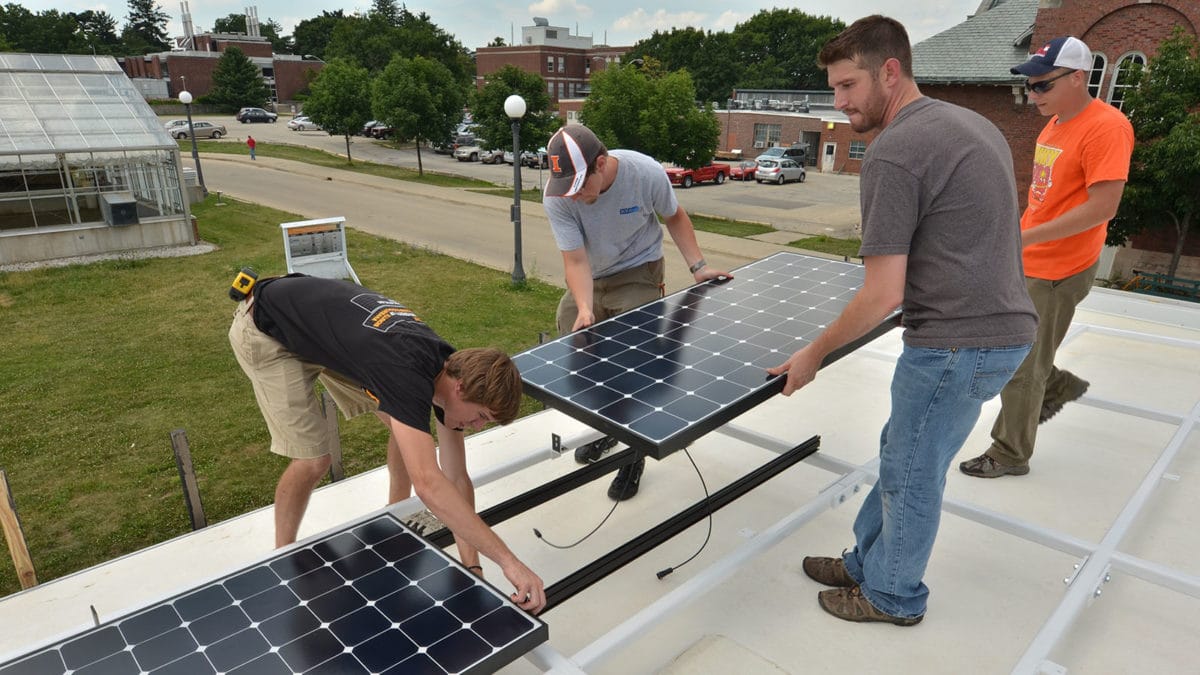The Illinois solar industry could face a big slowdown in new development after the final incentives from the state’s 2017 Future Energy Jobs Act were awarded earlier this week.
The Future Energy Jobs Act (FEJA) was developed to help the state reach its renewable energy mandates, specifically the 2008 renewable portfolio standard (RPS) that requires utilities to source 25% of their electricity from renewables in 2025.
Before FEJA was passed, the state was on track to miss this mandate. Since its enactment, however, both distributed and community solar have hit a boom period, with the program’s community solar blocks filling up almost immediately.
The timing of the final incentive awards is inconvenient at best. It coincides not only with the impending federal Investment Tax Credit Reduction, and also with news that utility companies ComEd and Ameren are nearing a 5% solar penetration level in their territories, which will trigger the replacement of net metering with a less lucrative rebate system.
Betting on a lame-duck
Hope is not yet lost for the state’s solar industry, however. State legislators will meet for a lame-duck session in January, and many are hopeful that a a short-term fix will be passed. One idea is to use already-collected funds to keep alive the adjustable block program until more comprehensive legislation can be passed in the spring. Although these funds have been collected already, language in the FEJA prevents them from being deployed right now.
“I think there’s recognition that everything is in flux right now,” John Delurey, Midwest Campaigns Director for Vote Solar, told pv magazine.
If the state were to deploy those funds – known asthe rollover funds – they would cover only a few months, but would help create some stability to keep people working until spring when comprehensive energy legislation may be taken up.
Using rollover funds “is not enough, it is just an interim solution,” Delurey said. “It isn’t the full stability that the workforce and the solar sector really needs.”
When solar projects that have already been approved for funding are completed, the distributed generation and community solar industries will be at a standstill if a new incentive program is not in place. Considering that solar industry employment has been especially hard-hit by the Covid-19 pandemic, the potential exists for many companies to lay off still more workers or go out of business altogether.
Long-term outlook
If emergency funds are allocated and the industry is kept afloat through the spring legislative session, eyes then would turn to the Clean Energy Jobs Act (CEJA), a bill which looks to build on FEJA’s foundation. The bill aims to commit Illinois to 100% renewable energy by 2050, cut carbon from the power sector by 2030, reduce pollution from gas and diesel vehicles in the transportation sector, and create jobs and economic opportunity statewide.
It also has a specific focus on job creation, especially for communities of color and places where coal-fired electricity plants operate.
“[The bill] provides stable funding for the RPS, it dramatically increases the Solar for All program, the Adjustable Block program and utility-scale procurements, and it does so in a way the ensures we’re pursuing greater equity and racial diversity in the clean energy future,” said Delurey.
CEJA has gained widespread support throughout the Illinois Legislature, and support from more than 100 organizations.
A second potential energy bill is Path to 100, which also looks to get the state to 100% renewable energy by 2030 by allocating funds collected on customers’ utility bills.
The bill would raise money by increasing the monthly charge that utility customers pay. That charge currently is capped at 2% of what customers paid per kilowatt-hour in 2007. Both bills would advance that baseline year to 2009, with CEJA raising the cap to 2.67% immediately and 4.88% by 2023. Path to 100 would raise the cap faster and earlier, but tops it out at 4% by 2026.
CEJA would authorize collecting up to $700 million a year by 2023, a sizable increase over the roughly $235 million a year currently collected for renewables through customer bills.
Supporters of both pieces of legislation say that the monthly utility bill increase would be nominal for most customers and would be softened by savings created by other proposed market reforms.
For now, anyway, Illinois’ solar industry faces an anxious wait.
“If we don’t see something during lame duck, if we don’t get something passed soon,” Delurey said, “we’ll be rebuilding the clean energy economy here in Illinois on the rubble of FEJA.”
This content is protected by copyright and may not be reused. If you want to cooperate with us and would like to reuse some of our content, please contact: editors@pv-magazine.com.









By submitting this form you agree to pv magazine using your data for the purposes of publishing your comment.
Your personal data will only be disclosed or otherwise transmitted to third parties for the purposes of spam filtering or if this is necessary for technical maintenance of the website. Any other transfer to third parties will not take place unless this is justified on the basis of applicable data protection regulations or if pv magazine is legally obliged to do so.
You may revoke this consent at any time with effect for the future, in which case your personal data will be deleted immediately. Otherwise, your data will be deleted if pv magazine has processed your request or the purpose of data storage is fulfilled.
Further information on data privacy can be found in our Data Protection Policy.